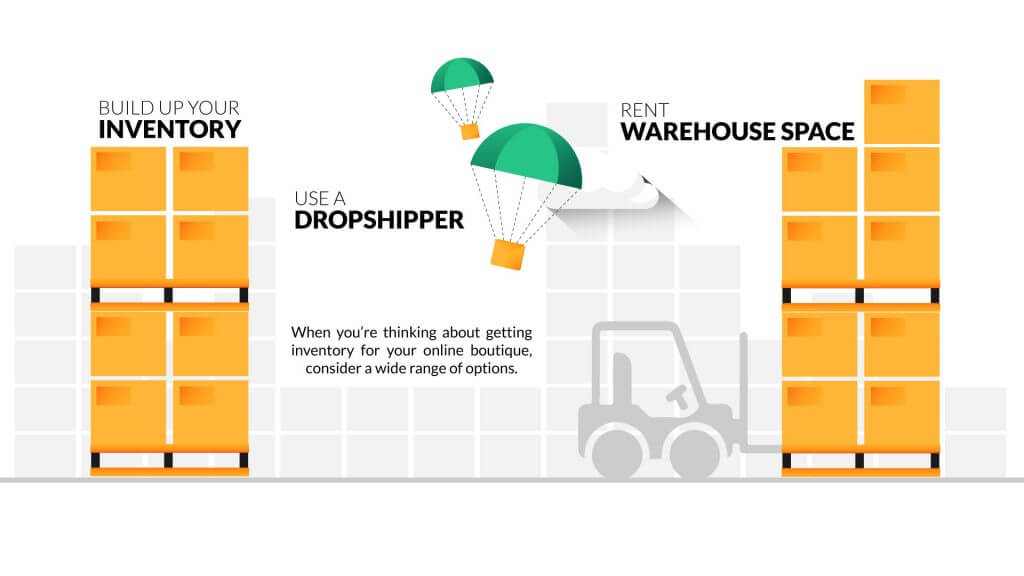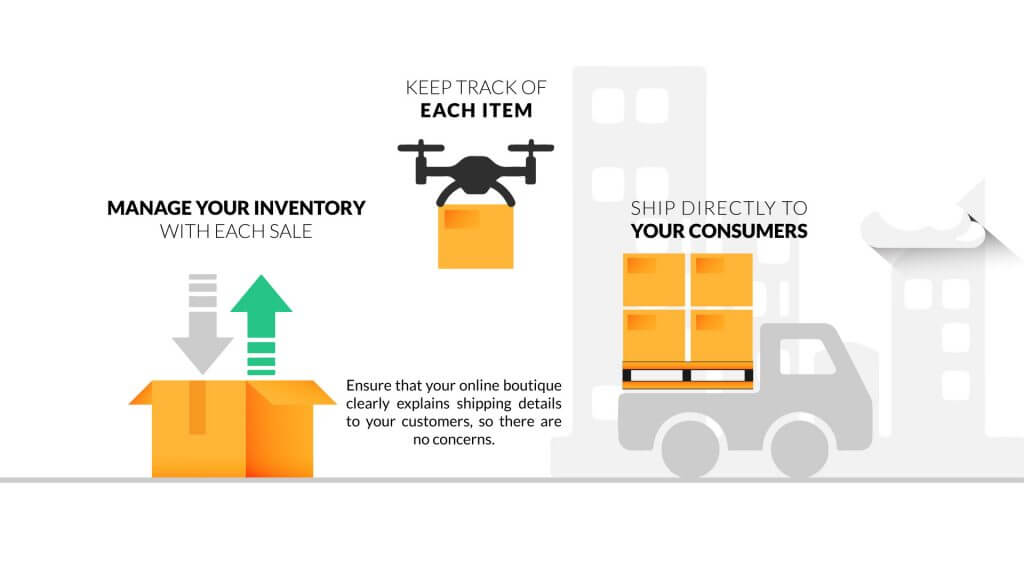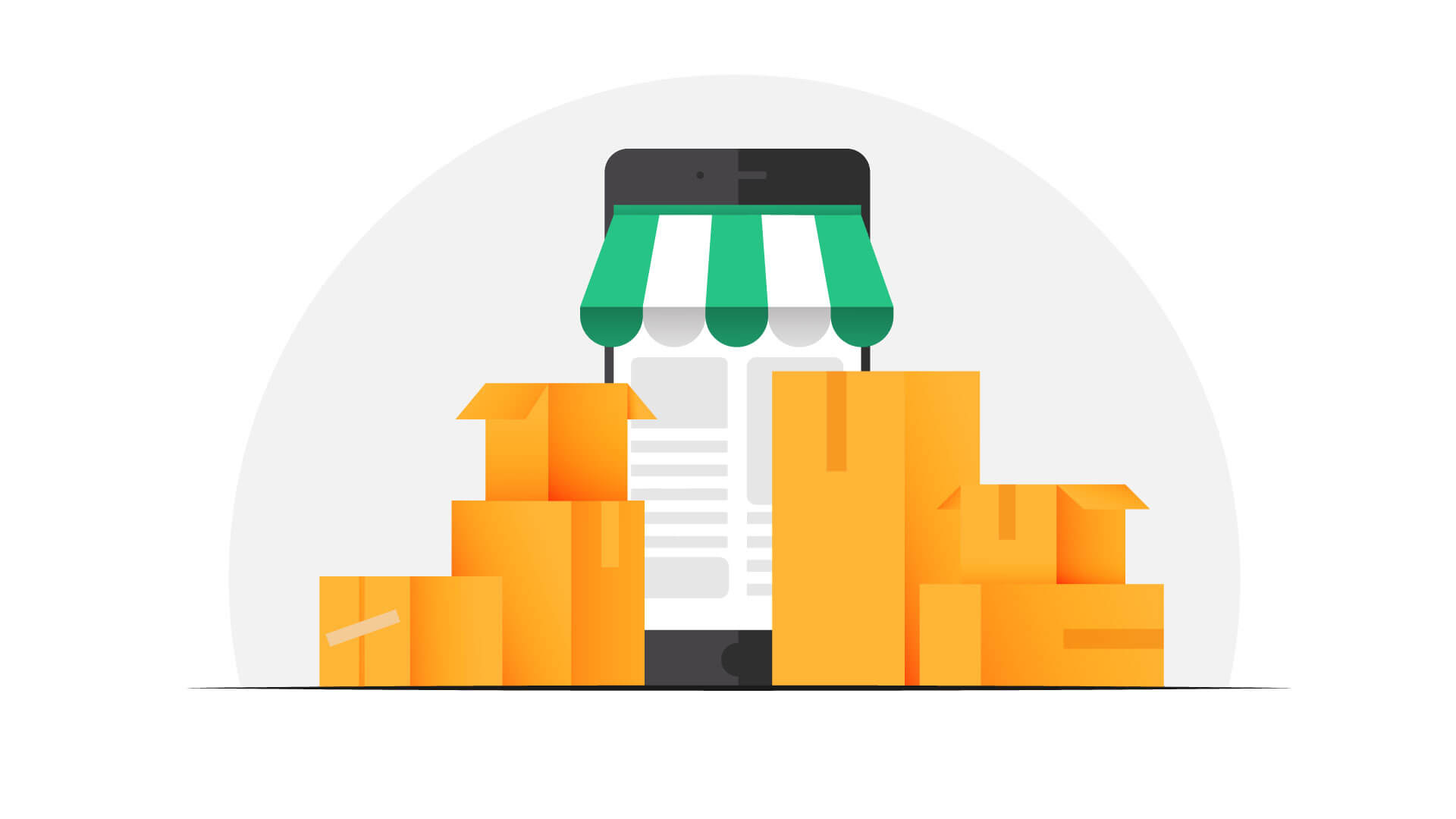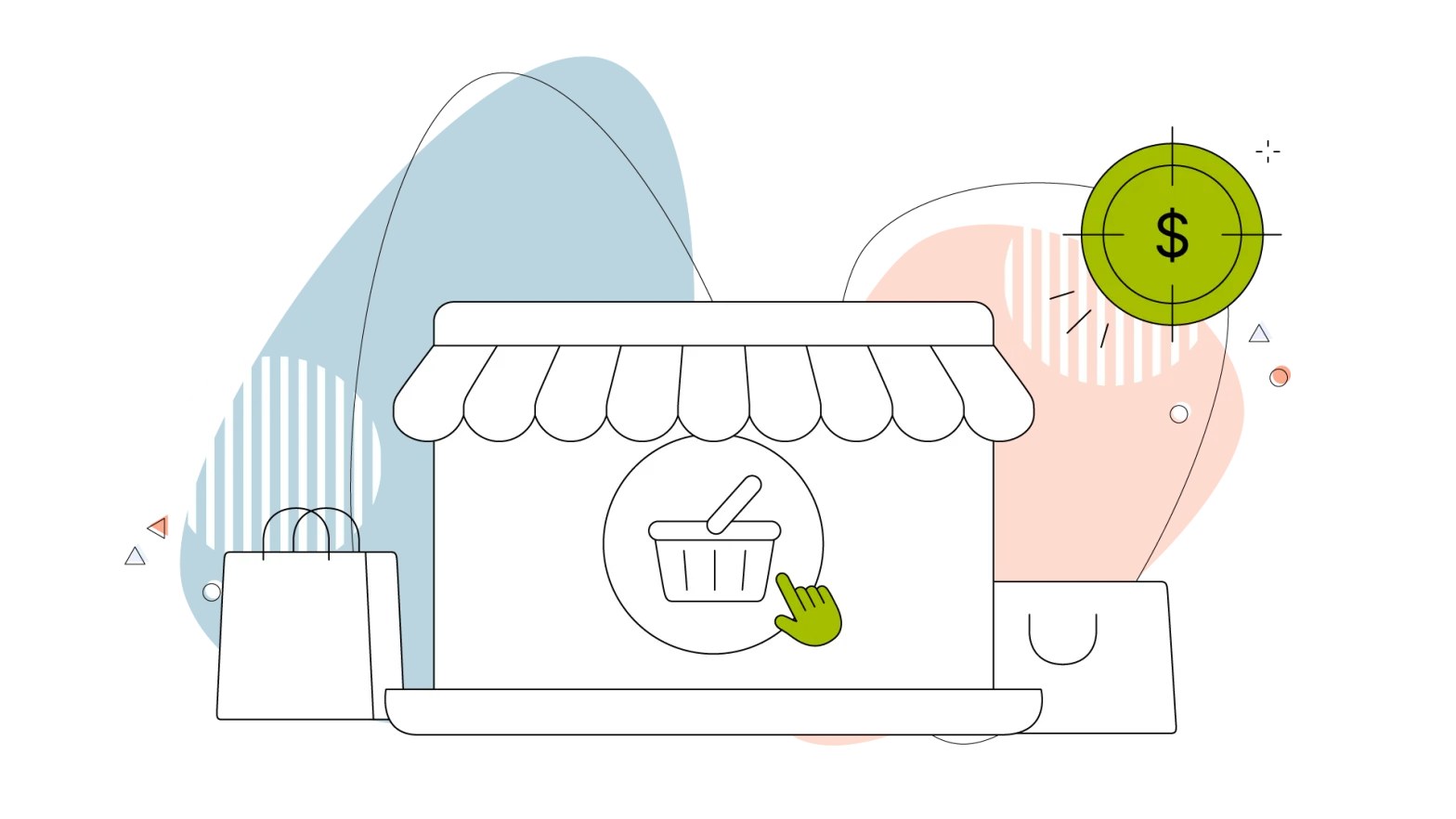You know the online boutique industry is booming. You mighe even know online fashion sales are expected to rise from $481.2 billion in 2018 to $712.9 billion in 2022. What you want to know, now that you’ve decided to enter the market, is how to get inventory for your online boutique.
That’s what this post is all about.
While establishing your brand is a great way to showcase your creative skills, inventory management enables you to flex those logistical muscles. Ensuring you have the right inventory at the right time is key when it comes to profitability. After all, your inventory is essentially a placeholder for your incoming revenue.
Having a solid inventory sourcing, storage, management, and shipping system provides your online boutique with a number of key benefits, such as having adequate cash flow to run your business. If you have too much inventory, your cash is tied up in stock. If you don’t have enough or the right kind, you have no way to increase your revenue. Also, proper inventory management enables you to ensure your customers are satisfied. If they can get their hands on your products quickly and economically, they’ll be much more likely to return and make another purchase.
So how can you ensure you have a solid inventory strategy? Here’s what you need to know:
- Build Up Your Inventory
- Store Your Products
- Keep Track of Each Item
- Manage Your Inventory with Each Sale
- Ship Directly to Your Customers
READ: Our full guide to Starting Your Online Boutique Store
Build Up Your Inventory
When you’re thinking about getting inventory for your online boutique, consider a wide range of options. Begin sourcing your inventory by researching your specific niche. Take a look at your competitors: do they create their own designs and sell them, or do they source from vendors and re-sell through their boutique? What are your customers looking for, and do you have the ability to deliver it to them?
Consider whether you want to create your own products or re-sell existing ones. In some cases, you can get products to market much faster by purchasing them from suppliers and re-selling them through your online store. Creating your own designs requires an initial large capital investment, which can also come with some risks.
While numbers and logistical details are critical to sourcing inventory, so are relationships. When you’re first starting out, it will take time to establish relationships with suppliers and vendors so that you can build up a rapport. Suppose you have a solid working relationship with a wholesaler, for example. In that case, she may approach you before any of her other customers to pick up items from a new product line. This way, you can corner the market by having the new products available first.
If you want to try your hand at sourcing your inventory instead of making it, here’s where you should look:
Online wholesalers
There are many benefits of using digital wholesales platforms. This is a good option if you’re looking for a wide range of products delivered to you quickly and sold at an economical price point. AliExpress is the biggest online wholesaler with a massive selection of top brands to choose from; however, you can also try online wholesalers such as Bloom Wholesale, LuxiSoCool, and The LookBook Wholesale.
Keep in mind that online wholesalers do not represent the brands they’re selling. They are essentially the midddleman that connects a verified seller with the customer. As a result, it’s vital to do your due diligence on the brands you’re buying from. Ensure they’re established, have a long history of success, sell quality products, and have a large amount of positive reviews. Otherwise, you run the risk of working with a brand that provides you with sub-par products or doesn’t stick to their word.
Do not overlook this step – finding the right supplier for your business can make or break the quality of your service, and therefore, your brand’s presence.

Fashion trade shows
If you prefer connecting with your suppliers and vendors in person, there’s no better place than a fashion trade show or convention. This is where several different brands, manufacturers, designers, and vendors all congregate to showcase their wares to potential buyers like yourself. You can walk from booth to booth, ask questions about quality and price, discuss new designs, and get to know the people in your industry. It’s an excellent way to build relationships with your suppliers.
One of the biggest perks in attending trade shows is that you can actually look at and feel the products to test their quality, which isn’t possible when purchasing from an online wholesaler. Plus, in some cases, you can cut out the middleman which may mean you get a better deal price-wise. Some of the biggest fashion trade shows include Magic Las Vegas in the United States and MICAM Milano in Italy.
Offline clothing vendors
Depending on your area, you may have access to wholesale locations where you can actually visit to connect with dealers, see the products, and work out deals. One of the downsides is that these wholesalers may not have the latest trends or may lack a range of products. However, if you know you’re looking for something specific for your audience, you may be able to find it at a specialty wholesaler.
Be sure to ask for references from colleagues in your industry and look at reviews wherever possible. Consider the bulk amount you need and whether the wholesaler is able to meet those quantity demands.
After Getting your Inventory: Storing your Online Boutique’s Products
Ordering the right amount of inventory sometimes feels like you have to be a psychic. How do you know how much you’re going to sell, and when? Be sure to properly forecast your products so you can order just the right amount. You’ll need to pay attention to your growth rate, market trends, and any upcoming promotions to get a handle on how much product you’re going to need at any given time.
Once you have your stock, you’ll need to think about where to store it. You’ve got a few options, depending on your needs:
- Storing inventory at your home: If you’re just starting out and have a small customer base, you may be able to store your products at your place, such as in your garage, basement, or attic. This is ideal for small items not sold in bulk.
- Using a dropshipper: You can hire a third-party business to store and ship your products for you. They have warehouse space and shipping channels set up, so all you have to do is send them the orders from your online boutique. This is ideal if you don’t have a lot of space and want to save time on handling the shipping logistics. Of course, it comes with a price tag.
- Renting warehouse space: Another option is leasing storage space near you. This way, when you have an order, you can go to the warehouse to get the products and then ship them to your customers. This is a good option if you have a high sales volume or large products. To help with your search, you can check out some of the leading third-party logistics (3PL) providers in this 3PL directory, along with information about their locations and specialty services.
Keep Track of Each Item
It’s vital to keep track of every single item of inventory for your online boutique so you can maximize your profits. Implementing an efficient category management approach ensures that your boutique maintains the right product mix, reducing overstock and preventing stockouts that could impact sales. The par system is a basic inventory concept that you can use to figure out how much you need to have of each item at any given time. If you go below the par number, your store could be in trouble, so it’s important to place a re-order of that item right away. Be sure to check your par levels on a regular basis, such as once a week.
Be sure to follow these best practices on how to get inventory for your online boutique at just the right levels:
- Follow the FIFO rule: First in, first out. This way, your inventory won’t get ruined or spoiled or become irrelevant.
- Always have a plan B: Things can go wrong. Know what you’ll do if your supplier runs out of a product during a busy season.
- Know which products move well: Use an inventory tracking system, such as Shopify or QuickBooks, to track which SKUs sell fast and which lag behind.
- Conduct frequent audits: Assign a barcode or number to each product so you can be better informed about your inventory. Conduct audits monthly, quarterly, or annually based on your business.
- Have a safety stock: Ensure you have a supply for 30-60 days, and also have a stash of safety inventory in case your stock runs out. Be sure to reorder enough to replenish your safety stash each time you use it.
Manage Your Inventory with Each Sale
Wondering how to get inventory for your online boutique to remain accurate at all times? Unless you have a low sales volume and an ample amount of time to check things manually, you’ll need to rely on an inventory management system. Many options are available, such as Agiliron, DEAR inventory, Shopify, and QuickBooks, each with their advantages. The key to remember is that the system should integrate with your eCommerce website so that your inventory levels are automatically updated whenever a sale happens.
Keep in mind that the December holidays result in large sales for many online boutiques, so you’ll need to adjust your inventory levels in anticipation of that time of year – and any other major holidays that affect your business. Use your inventory management system to carefully track when you sell the most products – and which types of products – so that you can anticipate those sales next time around and be better prepared. You don’t want to run out of stock during a major sale season, because it can cost you a lot of revenue.
Update your online boutique’s website as soon as you run out of a product. This way, you can keep customers informed and avoid frustrating. You’ll also want to include details about when you can expect the product to return. Consider also notifying your customers if you only have a few of a top seller left. This may incentivize them to make a purchase right away. Many inventory management systems can be integrated to automate these kinds of notices on your website, so you don’t have to do it manually each time.

Ship Directly to Your Consumers
Know what your options are when it comes to shipping your products to your customers so you can find the most expedient and cost-effective route for your business. Keep in mind to develop your shipping strategy and how it works with your product pricing for your online boutique.
A few options include:
- Providing free shipping: This is a big incentive for customers. You can either increase your product pricing to absorb the cost of free shipping, offer free shipping over a certain purchasing amount, or offer an exclusive discount code for free shipping.
- Charging flat rates for shipping: This means that regardless of the actual cost, the customer pays a set amount for shipping each time.
- Letting customers pay real-time rates: You can select an eCommerce platform that integrates with popular shipping carriers so customers can see and pay the exact amount for shipping – and choose their shipping options.
When considering your shipping costs, keep in mind that it’s not just about how much the shipping carrier charges. You also have to take into account a number of other elements, such as:
- The cost of packaging and labels
- The labor to package and ship the product
- Any customs or duty fees
Take a look at the shipping options where you are and check their rates. Some shipping carriers also have the option to set up a business account where you can get preferential rates or additional services.
Ensure that your online boutique clearly explains shipping details to your customers, so there are no concerns. Transparency is key when building trust, so plainly state the shipping timelines, options, and rates.
Your Online Boutique Awaits
If you’re wondering how to start a boutique business, HostPapa has you covered. Purchasing, storing, managing, and shipping your inventory is just one small piece of the puzzle. We’ll help you with those details, and you can also explore the other important areas of setting up your online boutique so you can get started on building that fashion empire.




